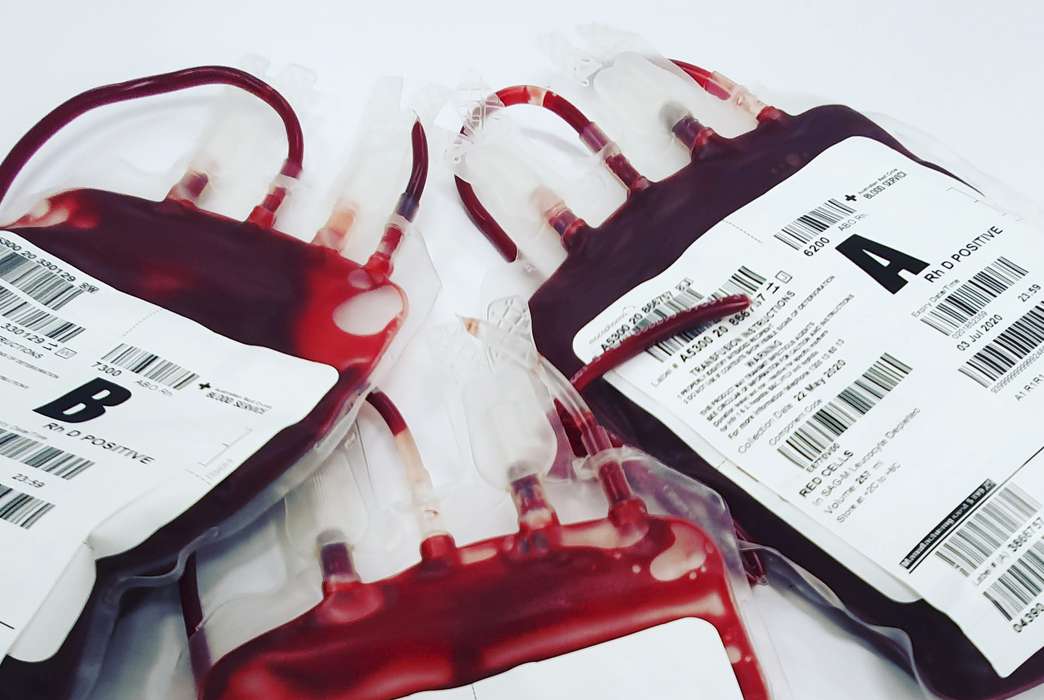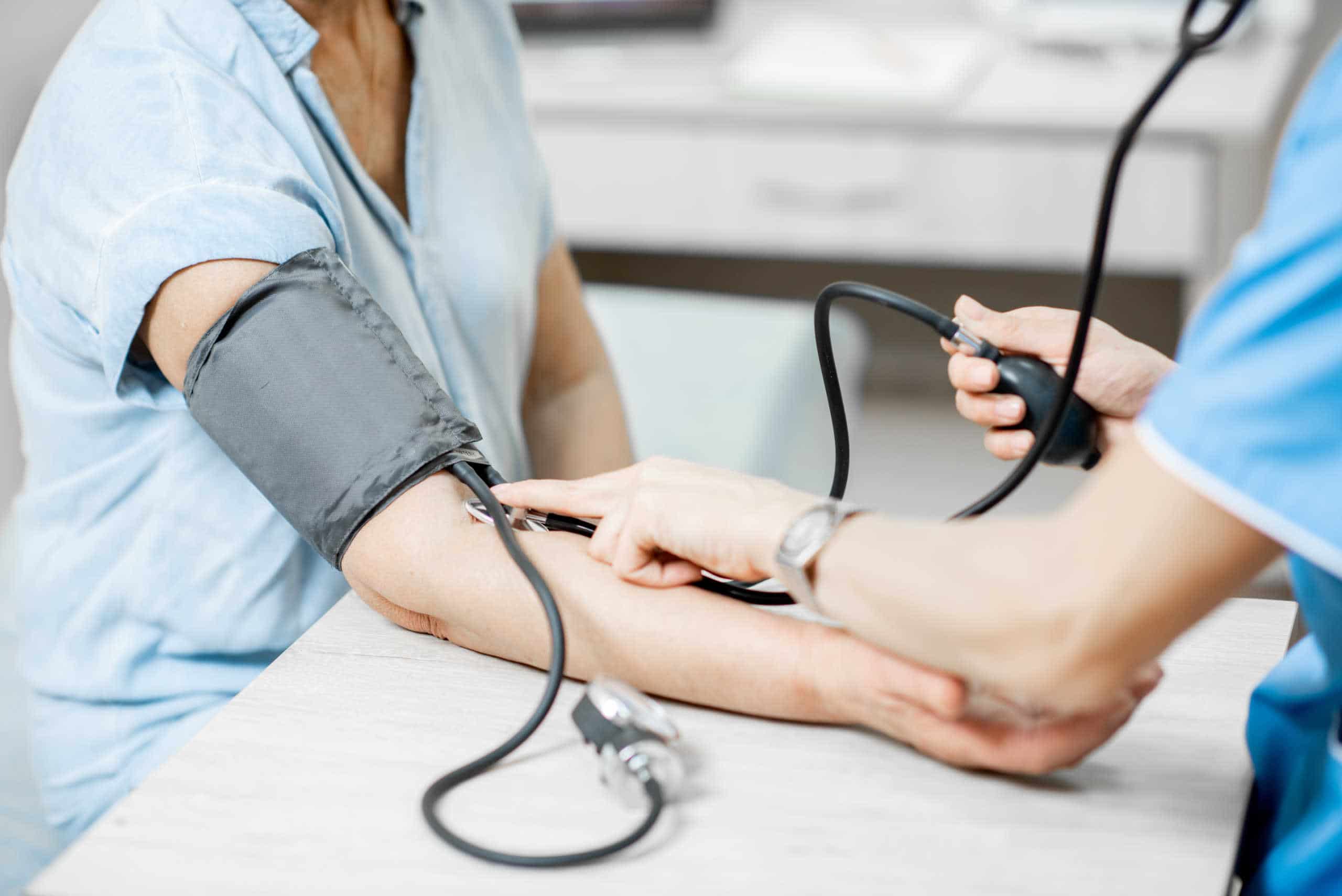A new portable device can detect human blood types within minutes, a potential lifesaver for trauma patients awaiting blood transfusions, for whom every second is critical.
Slightly larger than a microscope slide, the device compares a patient’s blood sample with blood antigen markers inside the system to detect whether someone is blood group A, B, AB or O, as well as positive or negative for the blood Rh factor. It requires just a fractional blood sample, meaning that a simple pinprick to the finger, like those commonly done at the doctor’s office is sufficient for use.
Co-inventors Steven W. Day and Majed J. Refaai have applied to patent the system, and the U.S. Patent and Trademark Office published their application April 8.
The team is also working to make a range of different blood-retrieval mechanisms possible — for instance, by connecting the device to a luer fitting, a built-in attachment that can take a sample from any line, needle or syringe that’s already collecting blood for other reasons. “We think that the immediate application will be for trauma patients as they are transported to the hospital emergency department,” Day, the head of the department of biomedical engineering at Rochester Institute of Technology, told The Academic Times.
Prior to the transfusion of foreign blood into patients who can spare the time, laboratory professionals conduct a standard 10- to 20-minute test that identifies which of four blood groups a patient belongs to and which of two Rhesus, or Rh, factors a patient has. The latter is determined by the protein found on the surface of blood cells. Then, the patient is matched with a compatible blood donor; if incompatible blood is sent into their veins, the patient can die.
Aside from the obvious same-group pairings, two of these blood types can cross over into the others. AB is called the universal acceptor, meaning it can receive blood from any of the four types; O is called the universal donor, meaning it can donate to any of the four types. The latter is crucial for doctors who are racing against the clock to treat patients in dire conditions on-site.
“Most trauma and severely bleeding patients — where 10 to 20 minutes may alter their outcome significantly — will receive a universal donor blood type,” Refaai, a professor in the department of pathology and laboratory medicine at the University of Rochester Medical Center, told The Academic Times.
While group O is called on in such cases, it isn’t always the best choice overall. That’s because along with blood types and their letter-based antigens in the body’s blood cells, there are associated letter-based antibodies in the body’s plasma.
For instance, group A’s possession of A antigens means it has B antibodies. That’s why it isn’t compatible with group B blood, which has B antigens; the B antibodies would attack the foreign B antigens.
The universal acceptor, group AB, gets around this because it has both A and B antigens, so it doesn’t have either antibody. That’s why it can accept both A and B antigens without a problem.
Group O, on the other hand, has neither A nor B antigens. While that allows it to be the universal donor because it doesn’t pose a threat to any antibody that may be present in a blood group, here lies the conundrum: Because it lacks both antigens, it carries both antibodies. That means group O can’t accept A or B blood and also poses a threat, albeit rare, to A, B and AB groups receiving it, because these groups all have at least one blood antigen that’s endangered by group O’s antibodies.
“O blood type has anti-A and anti-B antibodies, which may react with the recipient’s red blood cells,” Refaai said. This can cause hemolysis — the breakdown of blood cells; platelet dysfunction; and alteration in the integrity of endothelial cells, which line the blood vessel wall.
The researchers note in their application that such exposure to inappropriate antibodies and subsequent red blood cell hemolysis “may lead to significant consequences, such as acute renal failure and death.”
Although many studies refute the existence of large risks in transfusing group O blood into non-group-O people, the same studies do not claim there is zero chance of reaction. For instance, a 2015 study stating the risk was very low also noted that the rate of patients with detectable hemolysis, determined by laboratory testing and clinical observation, was four in 2,906.
Additionally, because paramedics and doctors treating emergency patients may not have time to identify a group type, they may not have time to identify an Rh factor, either. Those with a positive Rh factor can receive blood with either positive or negative Rh factors, but those with a negative Rh factor must receive negative-Rh blood. However, the transfusion of Rh factors is still considered on a case-by-case basis if medical staff is in the dark; if the incorrect factor is transfused, the consequences can be fatal.
So the universal donor blood type O, with an assigned Rh factor based on predetermined guidelines, is used in trauma patients due more to a lack of resources than to it being the best option. The new invention opens the door to the more ideal choice: finding exact blood type and Rh-factor matches, even in time-crunch situations.
One potential drawback is that for the system to work, it requires actual blood group antigens and antibodies, contained inside the device, to test a patient’s blood against. Some of the antigens must remain refrigerated to prolong shelf life, Day said, but “in the emergency vehicles, this is pretty easily accomplished.”
Refaai added, “We are currently evaluating an antibody stabilizer that can be added to the antibodies and maintain them for longer time periods at ambient temperature.
“The patent application, “ABO Blood group point-of-care chip testing,” was filed with the U.S. Patent and Trademark Office on Oct. 7, 2020. It was published April 8, with the earliest priority date of Oct. 7, 2019. The inventors are Steven W. Day and Majed J. Refaai, and the assignees listed are University of Rochester and Rochester Institute of Technology.
The article, “Quick blood-typing device can help bleeding patients en route to the ER”, written by Monisha Ravisetti, was first published in The Academic Times. Parola Analytics provided technical research for this story.






